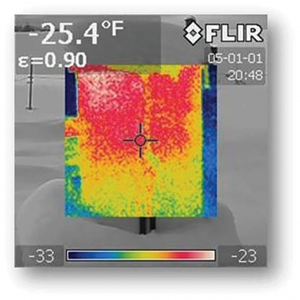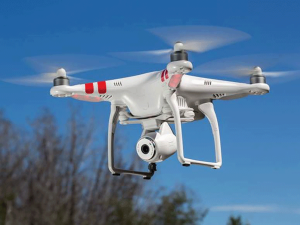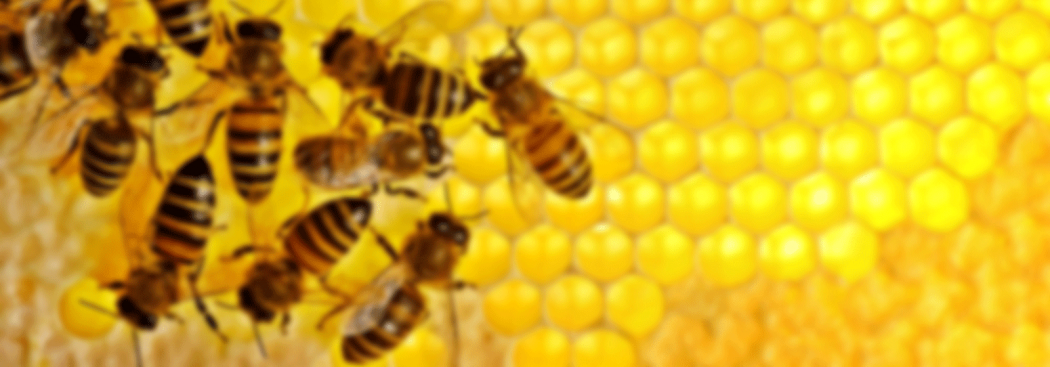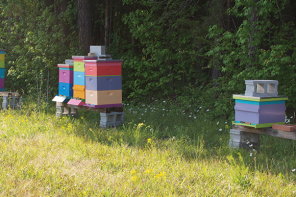By: Ann Harman

Ann Harman
ahworkerb@aol.com
Although December has not arrived the approaching days of Winter have slowed beekeeping tasks, giving us time to think about next year when we will all be busy with our colonies again. Equipment has been cleaned up and stored. We carefully made notes for items that will be needed. Perhaps it is time to start that letter to Santa Claus.
This year, as in years past, you will request a new hive tool to replace the favorite one you lost (again). A new veil is definitely needed – too many holes repaired with duct tape. Another nice gift would be an IOU for a special queen you are anxious to try. Your local club has been encouraging members to have a scale hive in the apiary. That would certainly be nice for tracking the nectar flow to know when to put on honey supers. So perhaps 2017 will be the year to have a scale hive. Put the scale on Santa’s list. Someone in the club was asking questions about using an infrared camera to see what the winter cluster is doing. Now that could be both a useful and fun Christmas present! The Winter months would be an excellent time to use one. It could even be useful the year around. Now for a visit to the internet to find out about these cameras.
 The Utah state apiary inspectors are using infrared cameras to inspect hives during the Winter months. If a colony is found dead it can then be opened to inspect for disease, especially American foulbrood. Pest control companies in African bee areas are using them to pinpoint a colony that has invaded a home or other building. Finding the exact location of the AHB colony means much less damage to a structure and easier removal of the bees and their nest. So an infrared camera could also be a tool for those beekeepers called to remove bees from buildings.
The Utah state apiary inspectors are using infrared cameras to inspect hives during the Winter months. If a colony is found dead it can then be opened to inspect for disease, especially American foulbrood. Pest control companies in African bee areas are using them to pinpoint a colony that has invaded a home or other building. Finding the exact location of the AHB colony means much less damage to a structure and easier removal of the bees and their nest. So an infrared camera could also be a tool for those beekeepers called to remove bees from buildings.
Here is a suggestion. Before plunging into an assortment of information on infrared cameras and who is doing what with them, take a few minutes to read two excellent articles by Dr. Jerry Bromenshenk about the cameras and their uses with beehives. Part one can be found at http://www.beeculture.com/infrared-the-next-generation-in-colony-management. For the second article go to http://www.beeculture.com/professional-ir-cameras-2. Now you have a better idea about camera selection and how to use it effectively. You do need to be able to interpret the colors and images the camera provides. After reading the articles you can then decide about adding an infrared camera to Santa’s list.
In days not too far gone by, the farmer stood at the edge of his field, then decided to walk through looking for problems and determining when to harvest. The cowboy rode his horse over terrain not suitable for pickups looking for cattle hiding in a ravine or riding out to take a look at the number of calves in a big field.
 Now drones fly over those fields reporting back on the state of the crop or the livestock. Wait – that’s a non-bee drone! I’ll have to say real-bee drone or non-bee drone so you won’t be confused. (By the way, don’t put a real-bee drone on a kite string and expect that to work.) Non-bee drones can be fun to fly although they do suffer from crash landings. (Real-bee drones do have crashes, too, but only after mating.)
Now drones fly over those fields reporting back on the state of the crop or the livestock. Wait – that’s a non-bee drone! I’ll have to say real-bee drone or non-bee drone so you won’t be confused. (By the way, don’t put a real-bee drone on a kite string and expect that to work.) Non-bee drones can be fun to fly although they do suffer from crash landings. (Real-bee drones do have crashes, too, but only after mating.)
Non-bee drones come in all sizes and can carry cameras for photos or videos. These drones are used by farmers, stockmen, real estate agents, and many others in their businesses. The uses seem to be increasing. Non-bee drones could certainly have a part in beekeeping. Those drones could be used to check on what plants are blooming. Then the beekeeper could stop guessing about putting on and taking off honey supers. Those beekeepers who have tasted their honey and wondered what the bees found could see what blooming plants the bees found.
It is difficult to know what is going on in the 18,000 acres surrounding a beeyard. (That is about the number of acres in a circle with a three-mile radius of an apiary.) Some beekeepers may wonder why their honey yield is decreasing. Suppose a honey-yielding meadow has now been converted to a shopping mall with acres of concrete and asphalt instead of blossoms. A camera on a non-bee drone could find out. Are there crops that could possibly be sprayed and be a danger for bees? Send out the drone!
A cruise on the internet about non-bee drones is eye-opening. First you have to learn to fly a drone. Some people learn readily, others can find it difficult. And it is best to learn how to repair a drone after a crash. The prices of drones range from about $50 to $1000. Add on the price of a camera and you realize that buying one could be expensive. It is definitely best to learn to be a good pilot first.
Once drones became so available problems arose. All kinds of drones – from toy ones to heavy professional ones – were flying everywhere, including around airports. It was inevitable – the Federal Aviation Administration (FAA) needed to regulate drones, termed UAS or Unmanned Aircraft System. So now you can buy a drone but you are required to register it. This registration began at the beginning of 2016. Any hobbyist (someone not using a drone in a business) weighing between 0.55 pounds and 55 pounds must register it with the FAA and pay a $5.00 registration fee. Those using drones as part of a business have a different registration.
Registration can be done online. Just put drone registration into a search box to find information and forms. When registering, drone owners must provide a name, physical address and email address. Drone owners then must mark their drones with a registration number or register its serial number with the FAA. So a beekeeper must consider many things to decide whether a drone would be a useful part of beekeeping or not.
Drones are for knowing the outside – the environment around the hive. Perhaps it is more important to know what is going on inside the hive. Hive monitors, from simple to complex, are appearing on the market. Perhaps a hive monitor would be the ultimate Christmas gift. Although many sizes and styles of non-bee drones are for sale everywhere, only a few in-hive monitors are available. The hive monitors send the data to the beekeeper’s computer. Monitors record temperatures through sensors placed throughout the hive. Some monitors also detect sounds. It seems very tempting to be able to know what activities the bees are doing. Since the monitoring systems are expensive it would be best to visit a beekeeper using one to see it in action. Perhaps requesting a monitor from Santa should wait until next year.
As we start to use modern technology in our beekeeping are we losing something? Today the beekeeper fires up the smoker and grabs the trusty hive tool and walks to the beeyard. Bees are flying in and out of hives. A bit of smoke is applied and the hive is opened. The story of that colony is ready to be read. Tomorrow, the future, the infrared image is noted; the wavy lines from the monitor are crossing the computer screen telling their story. Are we relying on modern technology to tell us all about our bees?
What would Storch say? In 1985 H. Storch wrote a small, but very valuable, book called At the Hive Entrance. It is still available today and should be read by all beekeepers. Watching the activity at the hive entrance can tell you much about the colony. Stop and look for a while – the ‘rush hour traffic’ during a heavy nectar flow, the colors of pollen brought in, the late-afternoon orientation flights, a dead bee being carried out and dumped, a guard bee accosting a possible intruder. Not even a monitor will bring you those scenes.
Is that infrared camera going to tell you anything about the temperament of that colony? Every once in a while a pleasant colony ‘gets up on the wrong side of the hive.’ But a colony can also just turn out to be a disagreeable one that needs requeening to settle down. The hive monitor cannot tell you the queen’s brood pattern or how well a colony is drawing out comb.
It’s time to requeen a colony that you know has an unmarked queen. Is technology going to help you find the queen? Not today, but perhaps in the future. Bees have carried bar codes and even tiny transmitters. Just think – no longer searching, searching . . . If the year’s color mark were replaced with a tiny transmitter, a scaled-down one like the lions and tigers wear for conservation studies, finding that queen would only take a minute or two.
Monitor and infrared camera advertisements seem to be emphasizing that the bees do not need interference in their daily lives. It is true that opening a hive can be disruptive to a colony and its activities. A meddlesome beekeeper, opening hives frequently and just rummaging through is disruptive. However many beekeepers have watched a waggle dance with followers on a comb being held and have watched the queen laying eggs. With the proper handling those bees were just carrying out their usual projects. Unfortunately today we must somehow cope with Varroa mites and small hive beetles. So a certain amount of colony disruption is necessary. Good beekeepers think ahead and plan their hive invasions to cause less stress on the bees.
We can wonder what the future will bring. Partial or full automation of tractors are used in the U.S. corn fields. Dairy cows are wearing sensors on their tails to alert the dairy farmers in Ireland that the cow is about to calve. Robots! Strawberries are being harvested by robots in Japan. Robots do thinning of lettuce plants in Europe. Cattle are being given their daily rations of feed by robots here in the U.S. We can dream about the beekeeping tasks robots could do. They don’t mind being stung. What would Langstroth think? I think he would approve of modern technology as long as the beekeeper does not lose that close personal contact with the bees. Both the beekeeper and the bees will always need that.
Ann Harman is hovering over her farm in Flint Hill, Virginia.










